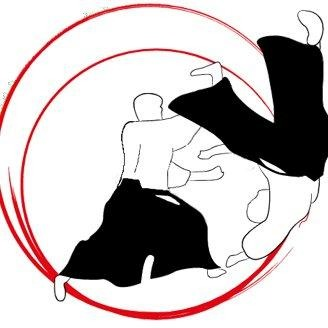20 Jo Suburi: Basic Techniques with the Jo
In Aikido, the Jo Suburi, also known as the 20 basic techniques with the staff, play a central role in developing coordination, balance, and harmony. These exercises help practitioners understand the principles of Aikido and improve their skills in handling the Jo. The Jo Suburi are divided into five groups, covering various aspects of movement and technique. They provide a comprehensive foundation for training and personal development in Aikido.
Training the Jo Suburi requires not only physical exercise but also mental concentration and a deep connection to one’s own body and movement. During the execution of the Suburi, it is important to maintain a relaxed posture and a smooth transition between movements. Breathing also plays a central role: taking a deep breath before starting the movement and exhaling deliberately when completing the strike or blow helps focus energy and refine technique. Through regular practice of the Jo Suburi, Aikido practitioners can improve their coordination, balance, and understanding of Aikido’s fundamental principles.
The 20 Jo Suburi
1. Group: Thrusting Techniques (Tsuki no Bu)
Choku-Tsuki: Straight Thrust (Choku = Straight, Tsuki = Thrust)
Gaeshi-Tsuki: Rotating Thrust (Gaeshi = Rotating, Tsuki = Thrust)
Ushiro-Tsuki: Rear Thrust (Ushiro = Rear, Tsuki = Thrust)
Tsuki-Gedan-Gaeshi: Lower Thrust with Rotation (Gedan = Lower Level)
Tsuki-Jodan-Gaeshi: Upper Thrust with Rotation (Jodan = Upper Level)
2. Group: Striking Techniques (Uchi-Komi no Bu)
Shomen Uchikomi: Strike to the Face (Shomen = Face, Uchi-Komi = Strong Strike)
Renzoku Uchikomi: Continuous Strike (Renzoku = Continuous)
Men-Uchi Gedan Gaeshi: Face Strike with Lower Rotation (Men Uchi = Face, Gedan = Lower Level, Gaeshi = Rotating)
Men-Uchi Ushiro-Tsuki: Face Strike with Rear Thrust
Gyaku Yokomen Ushiro-Tsuki: Opposite Lateral Strike with Rear Thrust (Gyaku = Opposite, Yokomen = Lateral to the Head)
3. Group: One-Handed Striking Techniques (Katate no Bu)
Katate Gedan-Gaeshi: One-Handed Lower Rotating Strike (Katate = One Hand)
Katate Toma-Uchi: One-Handed Strike from a Great Distance (Toma = Great Distance)
Katate Hachi no Ji Gaeshi: One-Handed Eight-Rotation Strike (Hachi no Ji = Figure Eight)
4. Group: Eight-Shape Movements (Hasso Gaeshi no Bu)
Hasso Gaeshi-Uchi: Eight-Rotation Strike (Hasso = Number Eight)
Hasso Gaeshi-Tsuki: Eight-Rotation Thrust
Hasso Gaeshi Ushiro-Tsuki: Eight-Rotation Rear Thrust
Hasso Gaeshi Ushiro-Uchi: Eight-Rotation Rear Strike
Hasso Gaeshi Ushiro-Barai: Eight-Rotation Sweeping Strike (Barai = Sweeping/Parrying Strike)
5. Group: Flowing Movements (Nagare no Bu)
Hidari Nagare Gaeshi-Uchi: Left Flowing Rotating Strike (Hidari = Left, Nagare = Flowing)
Migi Nagare Gaeshi-Tsuki: Right Flowing Rotating Thrust (Migi = Right)
Through continuous practice of the Jo Suburi, Aikido practitioners can not only deepen their technical skills but also gain a deeper understanding of the spiritual and philosophical aspects of this unique martial art.



